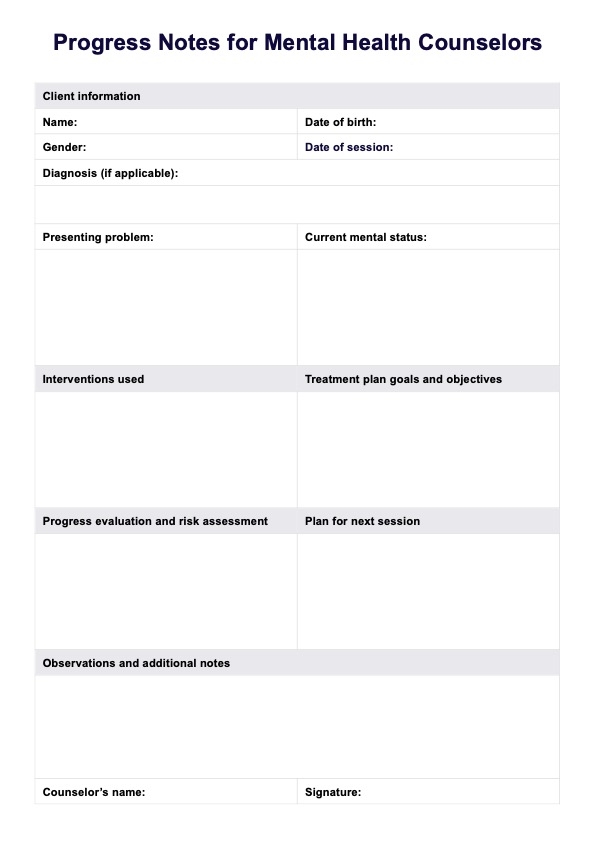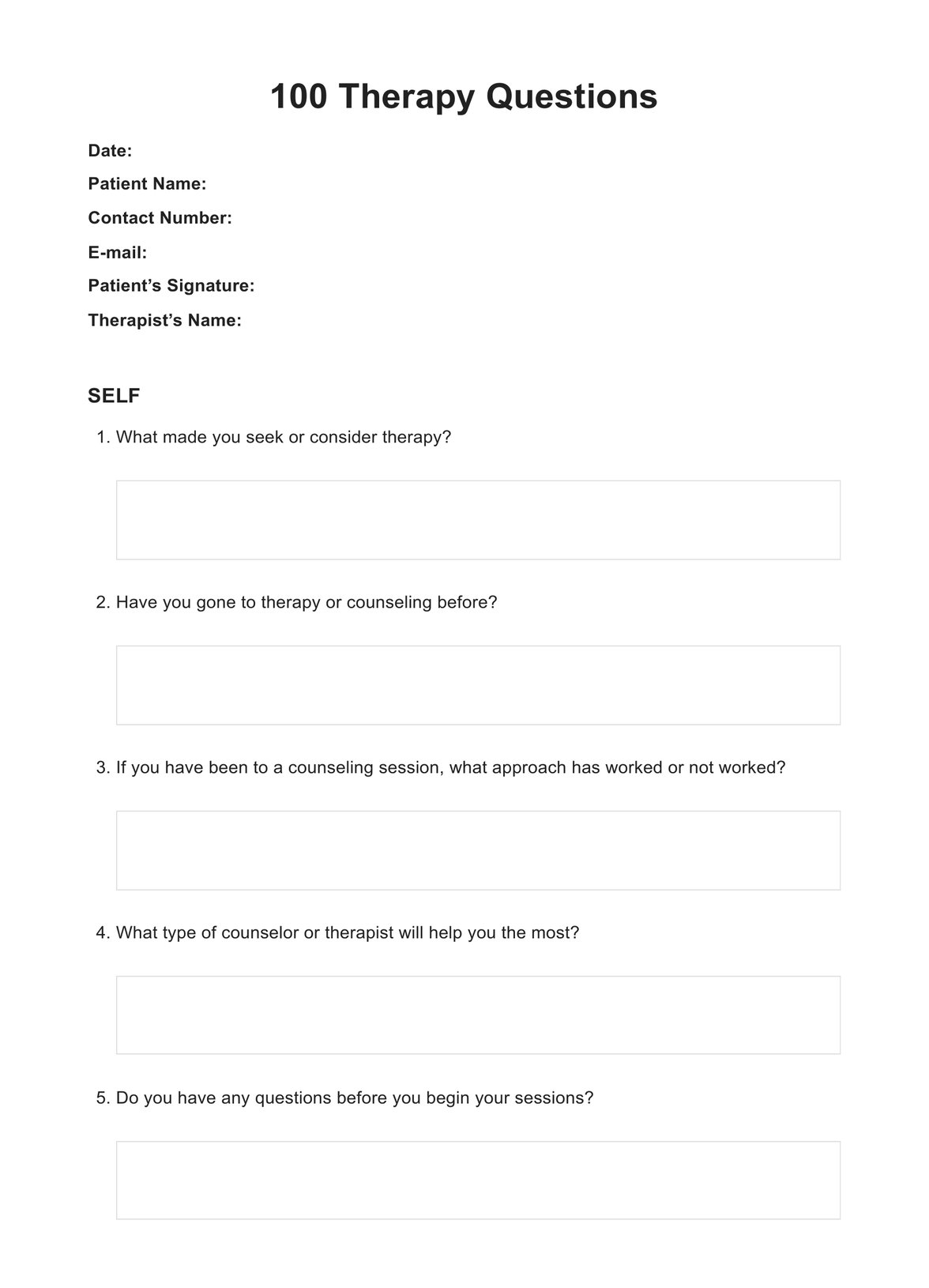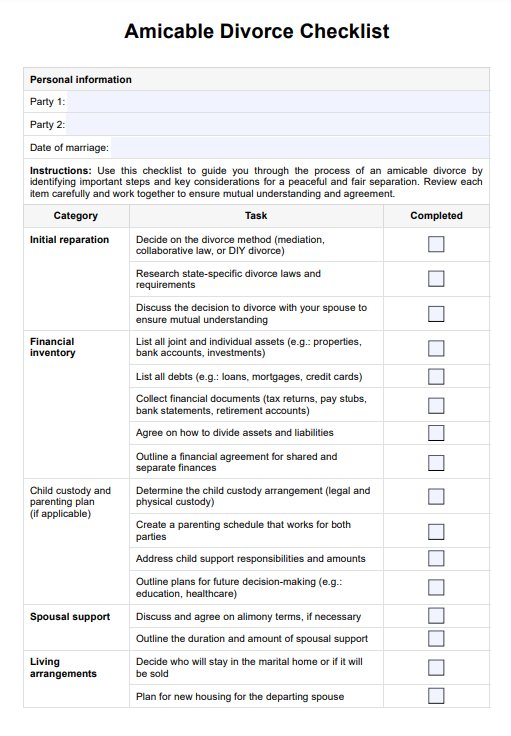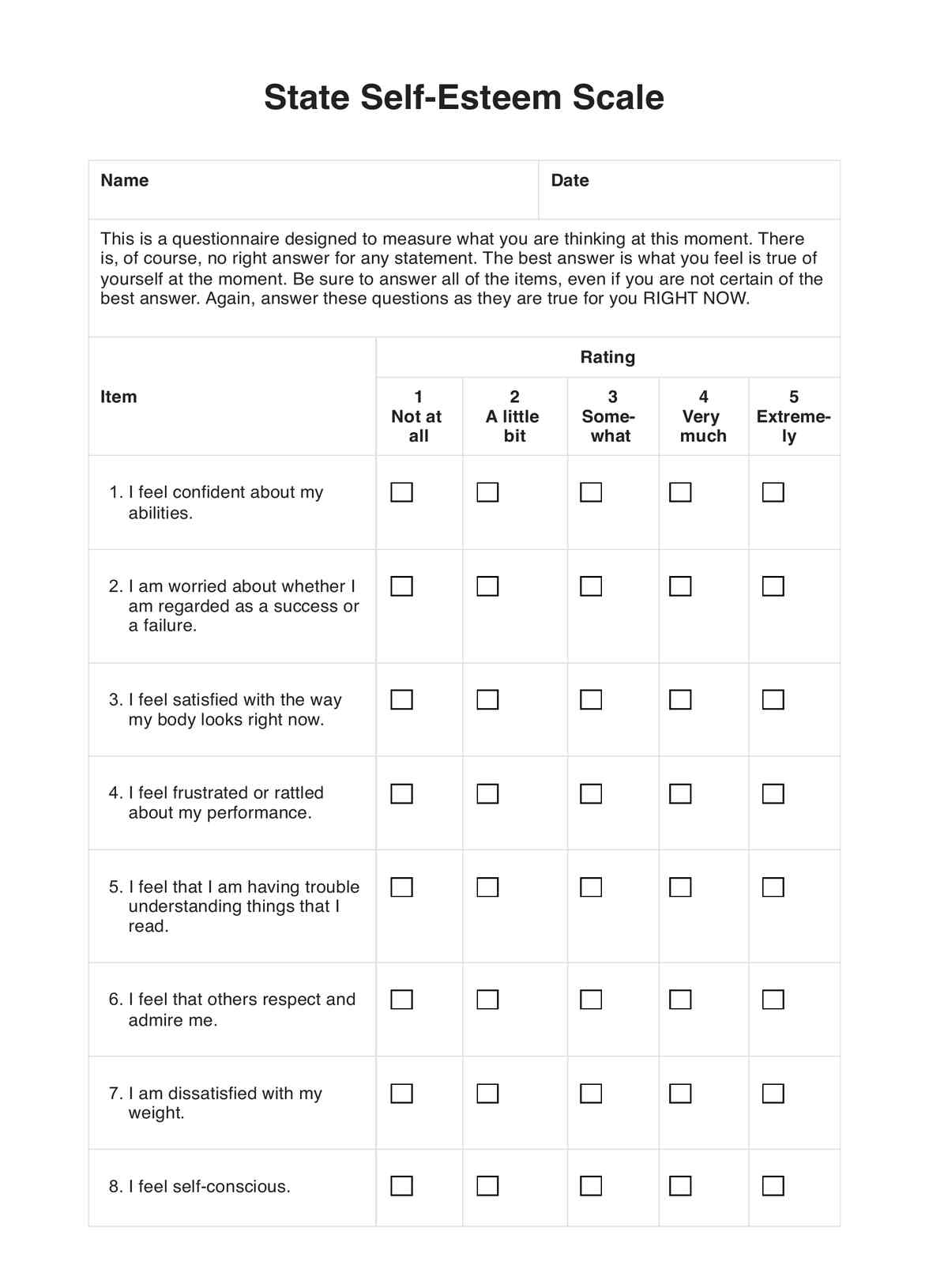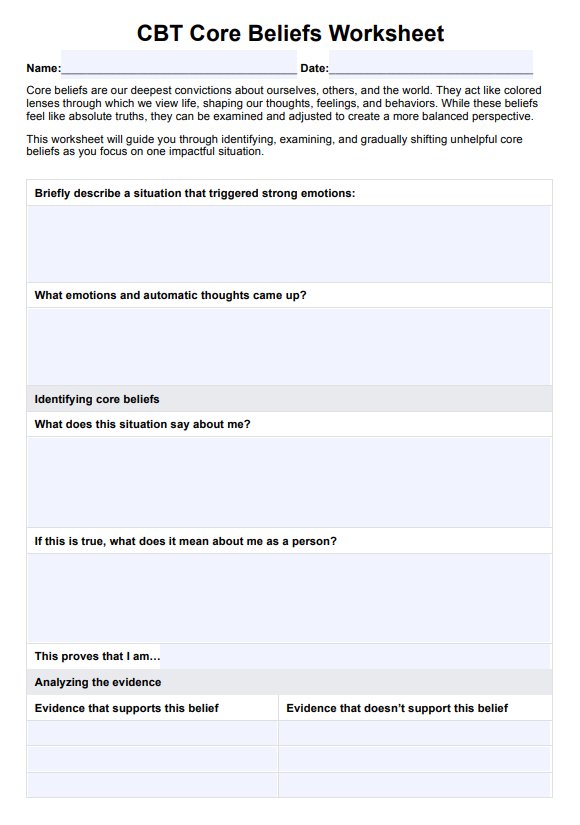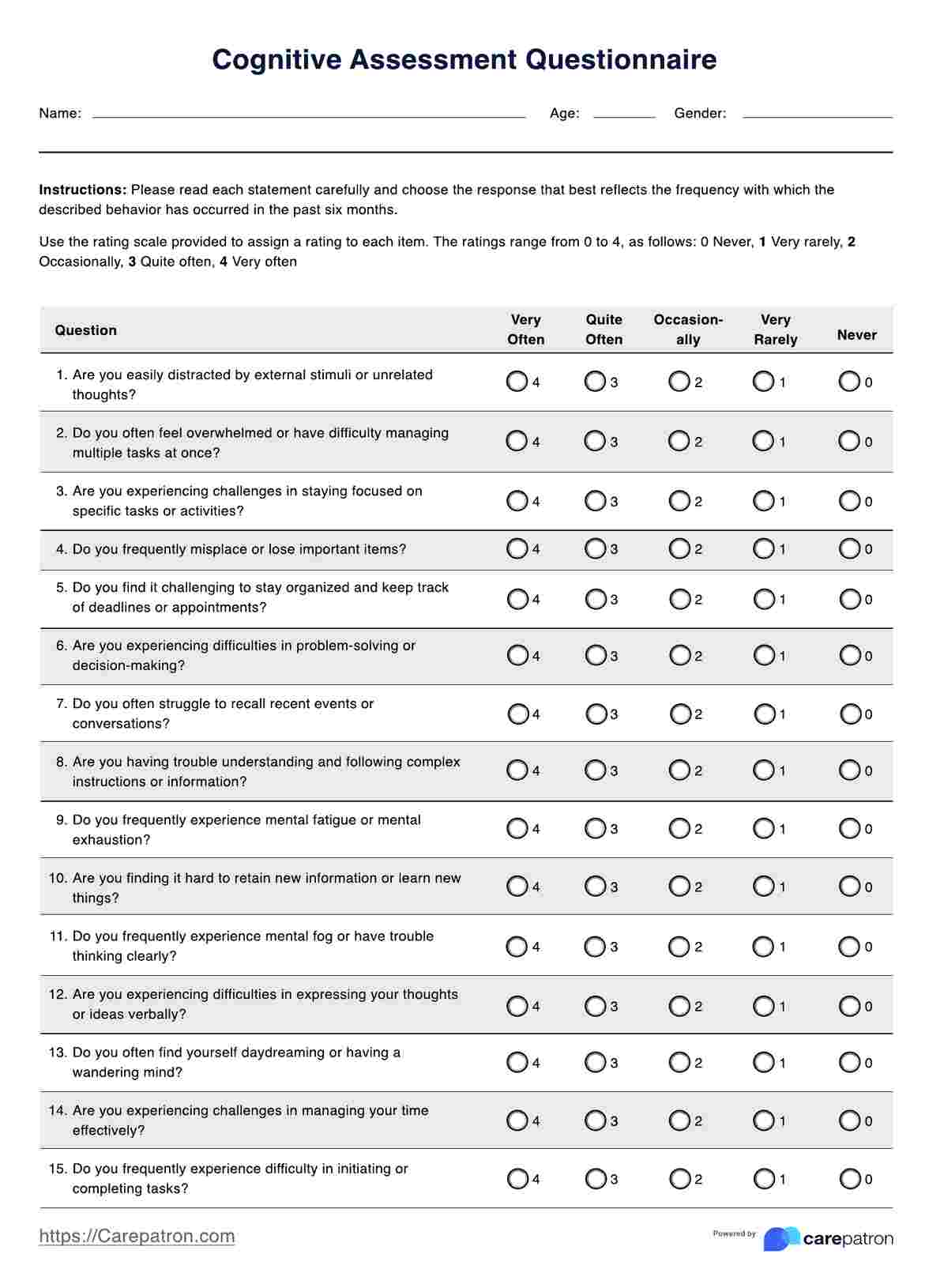Oldenburg Burnout Inventory
Use the Oldenburg Burnout Inventory to assess the severity of your patient’s burnout. Learn more about it through this short guide.


What is burnout?
Now, before we discuss what the Oldenburg Burnout Inventory is, let’s talk about burnout.
Burnout is something that most people will experience at least once in their lifetime. It is prevalent in people who work in hectic work environments where they are subject to constant spirit-breaking pressure, where the demands are (unreasonably) high, the atmosphere is unnerving, and where the people, especially those holding higher positions, are toxic.
When a person is burnt out, they are extremely exhausted because of overwork, constant stress, possibly lack of growth, lack of direction, and the feeling of working towards nothing and getting little in return. This will become noticeable in their disposition, and they become evidently lethargic and tired, both physically and mentally.
Burnt-out people also become susceptible to physical problems like fevers, having trouble sleeping (which is not good because this makes them feel more tired than they already are), migraines, etc. Not only that, but they tend to become jaded and cynical as they gradually become more dissatisfied with their work and feel nothing when they achieve something. It’s also normal for people who are burnt out to start thinking negatively about their work and output, and sometimes even their employer.
This isn’t just limited to work, but work is the biggest cause of it. Burnout can occur in relationships we have with others, our responsibilities, and sadly, even our hobbies and passions.
Oldenburg Burnout Inventory Template
Oldenburg Burnout Inventory Example
How to use the Oldenburg Burnout Inventory
If you’re handling a patient who is burnt out, ask if it is due to work. If it is, then talk to them about the Oldenburg Burnout Inventory, which is an assessment that gauges how severe their burnout is by taking a look at two things:
- Exhaustion - This is caused by being stressed for far too long. Being overworked can lead to exhaustion, and other aspects of a person’s life that might be troubling them will only add to their stress. Those who are exhausted as a result of burnout will have no energy or motivation to do anything else, including spending time with others or just setting aside time for themselves. More often than not, they just go home, eat, then sleep.
- Disengagement - This is the result of burnout. Remember the point we made earlier about being jaded and cynical? This is it. If the level of disengagement is high, a burnt-out person will stop caring about their work, job, and employer. In some cases, the misery and emptiness they feel will spread to the rest of the team, whether the burnt-out person is aware of it or not.
- For this inventory, the person engaging with it just needs to answer sixteen items, all of which are related to work. They can answer each item using one of four preset answers: strongly agree, agree, disagree, and strongly disagree.
Here are some of the items they must answer:
- I always find new and interesting aspects in my work
- I can tolerate the pressure of my work very well
- I find my work to be a positive challenge
- Sometimes I feel sickened by my work tasks
- After my work, I usually feel worn out and weary
- During my work, I often feel emotionally drained
Each answer choice has a corresponding score:
- Strongly agree = 1
- Agree = 2
- Disagree = 3
- Strongly disagree = 4
Some items have reverse scoring. These are items 2-4, 6, 8-9, and 11-12. This means if you select “Strongly agree,” you get 4 points, and 1 point if you select “Strongly disagree.”
You must calculate the scores for Disengagement, Exhaustion, and the whole scale. The higher the score, the higher the level of disengagement, exhaustion, and burnout overall.
When is it best to use the Oldenburg Burnout Inventory?
The best time to use the Oldenburg Burnout Inventory will depend on who uses it. If you’re a healthcare professional handling a patient who is burnt out, inform them about the scale and ask if they would like to be assessed using the inventory. If they consent, there are two ways to go about using it:
- You can use the inventory and conduct the inventory items like an interview. This will make accomplishing the inventory take longer, but the upside is that you can have your patient expound on their self-ratings. If they expound on them, you might get more information to use when creating a care or action plan. You can enhance your practice and client outcomes with the support of this action plan template.
- You can simply hand them a copy and have them answer it independently.
If you’re not a healthcare professional and you stumbled upon this guide, you can definitely use this to assess how burnt out you are. If your burnout has negatively impacted your physical and mental health, we recommend seeing a professional to help you work through it. Normally, lifestyle changes, finding a support system, and leaving your job (only if you can afford to) can do the trick, but it wouldn’t hurt to see a therapist to help you out.
What are the benefits of using the Oldenburg Burnout Inventory?
It can help healthcare professionals gauge how burnt out their patients are.
If you’re a healthcare professional helping patients work through their burnout, whether through life coaching, mental health therapy, or counseling, you can use the Oldenburg Burnout Inventory to gauge how burnt out they are. The scale assigns a score for their level of disengagement, exhaustion, and overall burnout. While it’s strange to put a number on something that can’t really be quantified, the number gives professionals something to work with.
It can help patients realize how burnt out they are.
Just as the Oldenburg Burnout Inventory can be used to help professionals gauge how burnt out their patients are, the same can be done for the patients themselves. More often than not, burnt-out people are so exhausted to the point that, even if they are aware that they’re burnt out, they’re not exactly aware of how severe their burnout is. They’re likely to be too tired and beat up to even think about that, so by answering this inventory, they might realize how bad their burnout is. They might be able to determine what they need to do to restore themselves to a state of healthy physical and mental well-being.
It can be used to monitor patients or yourself over time.
If you’ve discussed an action plan with your patient about what they can do to shake off their burnout, you should schedule them for a routine checkup so you can assess their progress. If their scores are lower, that means the action plan is working. If not, then maybe giving the patient more time is best, or you might want to discuss alternate action plans and see which one does the trick.
If you’re not a professional and you just want to reuse the Oldenburg Burnout Inventory, you can definitely use it whenever you want. If you’ve been giving yourself self-care (especially if you left your job), you can use the inventory to see how far you’ve improved and compare how burnt out you were before to how you’re feeling now.
Commonly asked questions
It depends on how you use it. Usually, it can be accomplished in five minutes. If you conduct it like an interview, it might take longer than that.
Evaluate your patient more using other assessments and interview them. You’ll need enough information to develop an action plan tailored to your patient’s needs.
Well, if you score high and you agree that your score best represents the level of your burnout, then it wouldn’t hurt to see a therapist or counselor. It’s possible to work through your burnout on your own. Making lifestyle changes, finding support systems, finding healthy ways to cope, and, perhaps, leaving your job might do the trick. If these things aren’t doing it for you, then seeing a professional might help. It wouldn’t hurt to try.


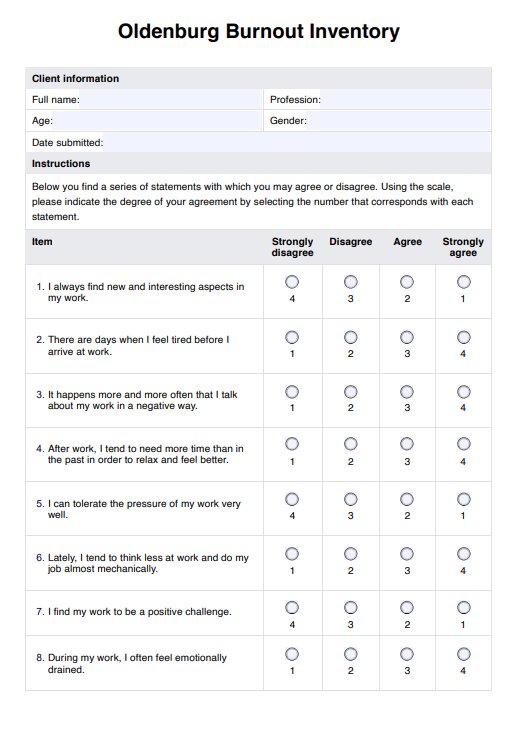
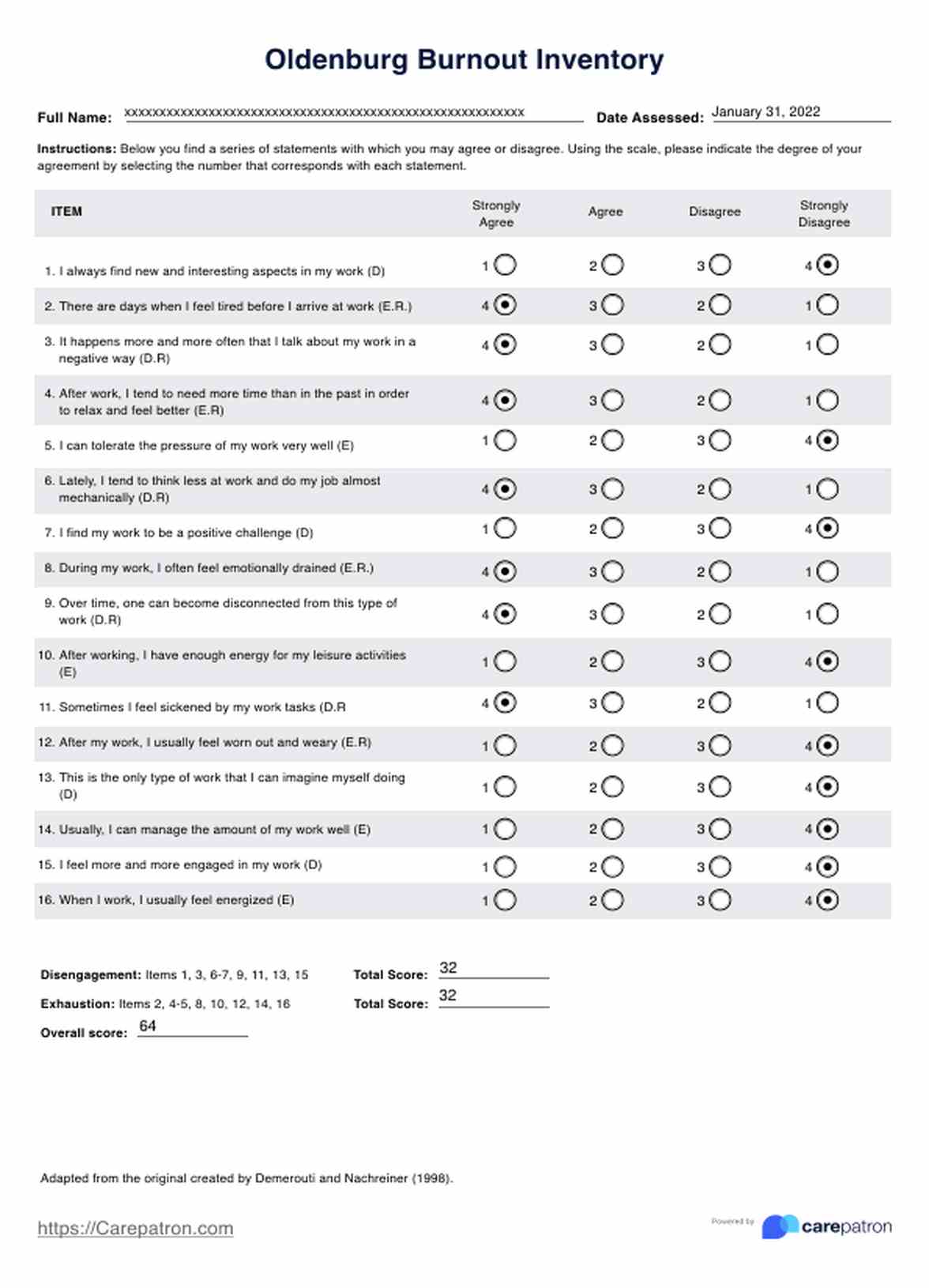
















-template.jpg)




















































































